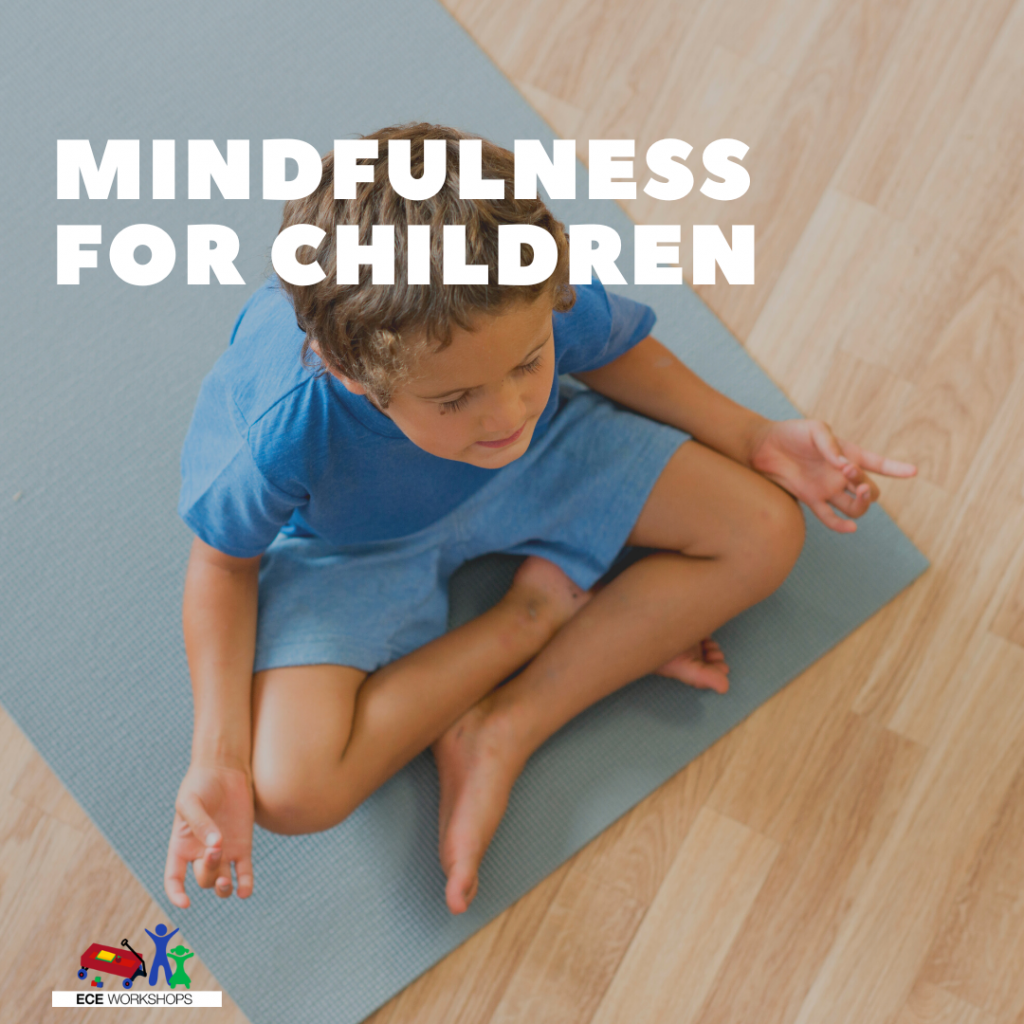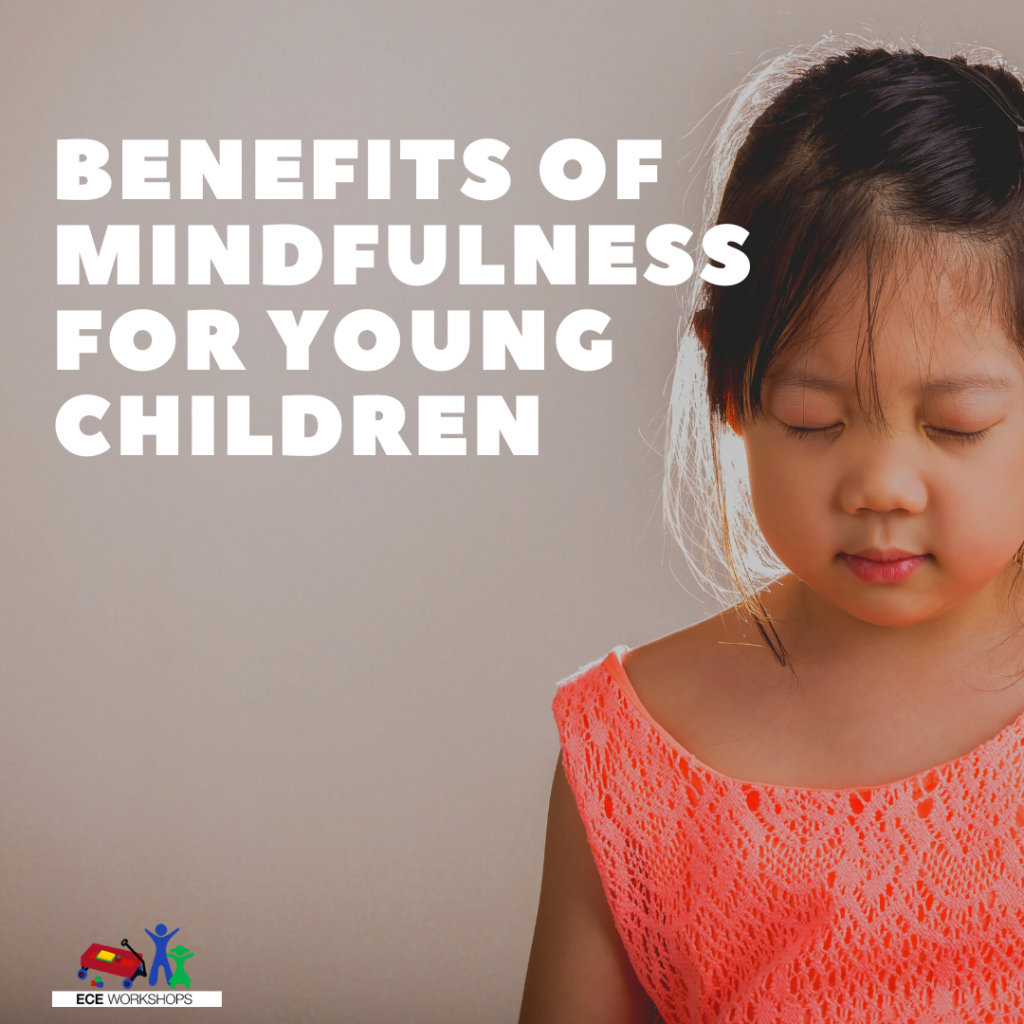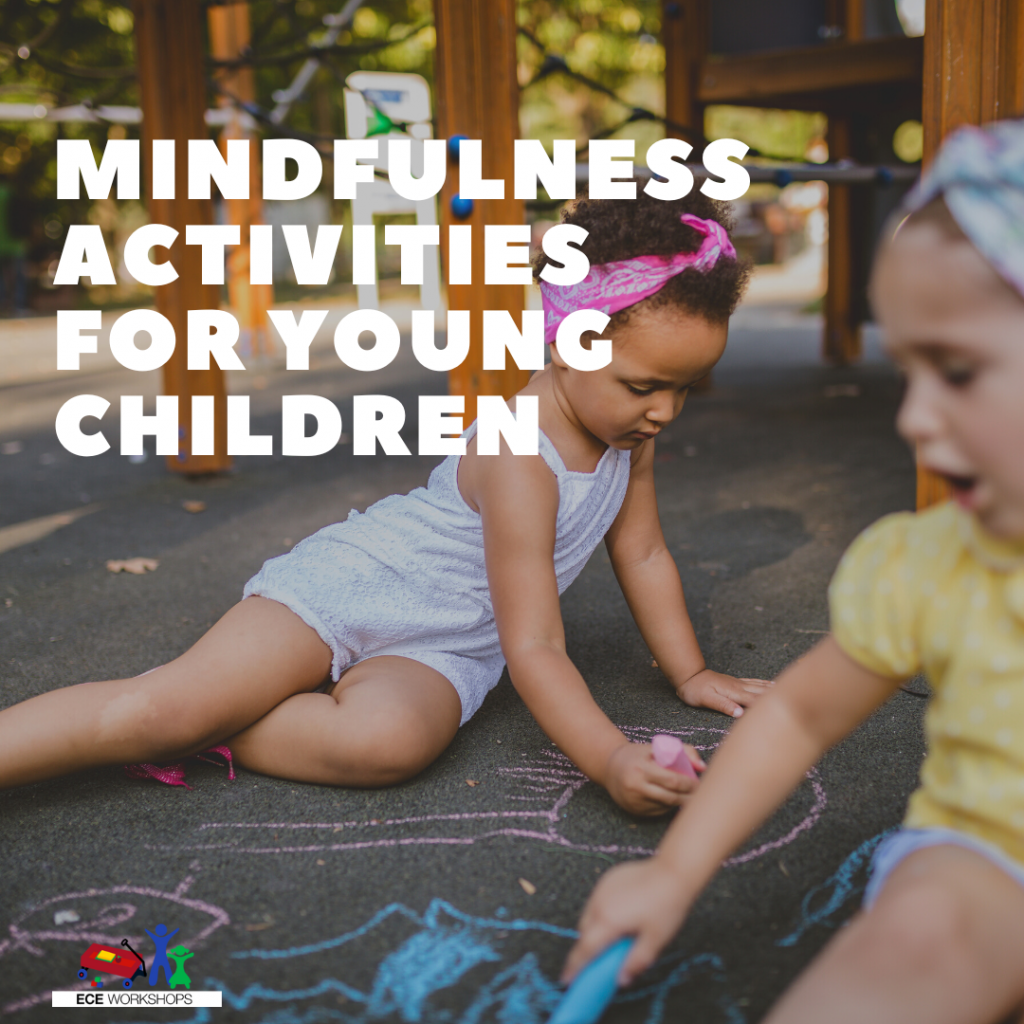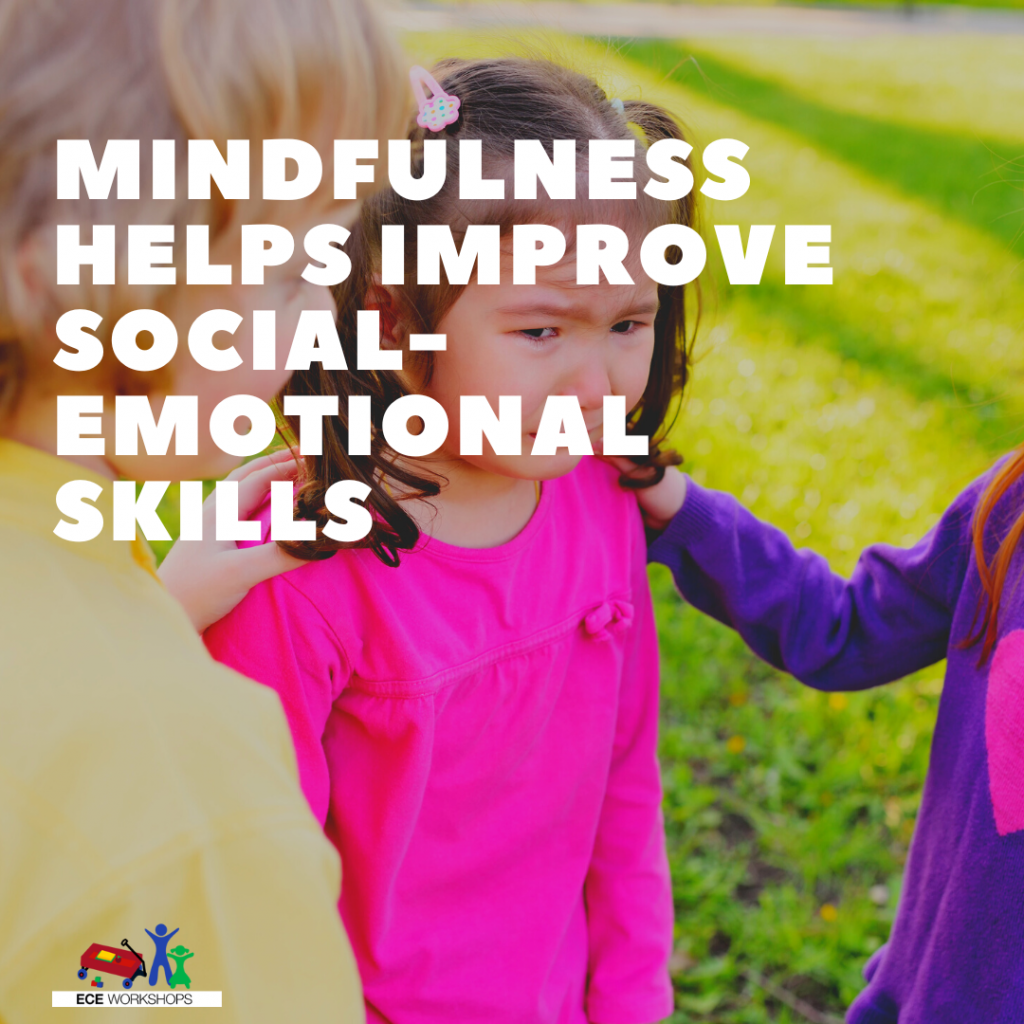
Mindfulness is the practice of present moment awareness. It is a way of paying attention to the here and now without judgment. Mindfulness can be practiced by people of all ages, including young children. As an early childhood educator, you can introduce mindfulness for children into your program in a variety of ways. Mindfulness for children can be especially helpful in early learning settings and child care programs.
Benefits of Mindfulness for Children

There are many benefits of mindfulness in the classroom when practicing mindfulness with young children. The benefits include improved focus and concentration, decreased anxiety and stress, enhanced self-regulation skills, and improved social-emotional skills.
Focus and Concentration
One of the most well-known benefits of mindfulness is improved focus and concentration. When children are mindful, they are better able to pay attention and stay on task. This is because mindfulness helps children to quiet the mind chatter that can interfere with learning. Additionally, mindfulness helps children to become more aware of their surroundings and the present moment. As a result, they are less likely to be distracted by things that are going on around them.
Anxiety and Stress Management
Mindfulness can also help children to manage anxiety and stress. This is because mindfulness teaches children how to control their breath and body. When children feel anxious or stressed, they often take shallow breaths from their chest. This type of breathing can make anxiety and stress worse. However, when children practice mindfulness, they learn how to take deep belly breaths. This helps to relax the body and calm the mind. Additionally, mindfulness gives children a break from their thoughts and allows them to focus on the present moment. This can be beneficial for children who are worriers or who tend to ruminate on past events.
Self-Regulation Skills
Another benefit of mindfulness is enhanced self-regulation skills. Self-regulation is the ability to control one’s emotions, behaviours, and thoughts. When children are able to self-regulate, they are better able to cope with difficult emotions and situations. Mindfulness helps children to self-regulate by teaching them how to notice when they are feeling overwhelmed or out of control. Additionally, mindfulness gives them practices that they can use to calm down (such as deep breathing). As a result, children who practice mindfulness have an easier time controlling their emotions and behaviours.
Social-Emotional Skills
Finally, mindfulness can help improve social-emotional skills such as empathy and emotional intelligence. Empathy is the ability to understand and share the feelings of another person. Emotional intelligence is the ability to effectively manage one’s own emotions as well as the emotions of others. Children who practice mindfulness learn how to pay attention to their own emotions as well as the emotions of others. As a result, they develop a greater understanding of what others are feeling which leads to increased empathy. Additionally, since they know how to manage their own emotions effectively, they develop strong emotional intelligence skills that they can use throughout their lives.
How to Introduce Mindfulness into Your Early Childhood Education Program

There are many ways that you can introduce mindfulness into your early childhood education program. One way is to start each day with a brief mindfulness activity. You can also incorporate mindfulness activities into centres or throughout the day as transitions between activities. Below are some examples of mindfulness activities for 3 year olds, 4 year olds, and 5 year olds.
Mindfulness Activities for 3 Year Olds
Listen to calming music and dance gently
Look at books about feelings/emotions
Play with putty or slime
Draw with chalk on the sidewalk
Plant seeds in recycled egg cartons
Do simple Yoga poses
Create a calm down corner
Mindfulness Activities for 4 Year Olds
Listen to calming music and do Yoga poses
Do a scavenger hunt outside (look for things that are different colours, shapes, etc.)
Make a spirit stick by decorating a stick with feathers, beads, etc.
Play games such as Freeze Dance or Red Light Green Light
Play catch, hopscotch or jump rope
Learn some breathing exercises
Create a relaxation jar by filling a jar with glitter glue and food colouring
Have a sound scavenger hunt (listen for things that make specific sounds)
Mindfulness Activities for 5 Year Olds
Do simple Yoga poses while listening to calming music
Go on a nature walk and collect items along the way
Take some deep breaths while looking at calming pictures/colouring in mindful mandalas
Try a sensory bottle by filling a bottle with glitter glue and food colouring
Do some fun brain breaks such as The Hokey Pokey or Head Shoulders Knees and Toes
Mindfulness has many benefits for young children including improved focus and concentration, decreased anxiety and stress levels, enhanced self-regulation skills, and improved social-emotional skills such as empathy and emotional intelligence. By teaching young children mindfulness techniques such as deep breathing and present moment awareness, we can help them succeed both academically and socially. What other ways have you found helpful for practicing mindfulness with young children? Let us know in the comments below!
